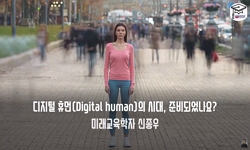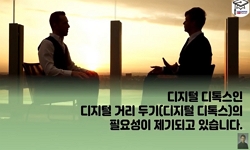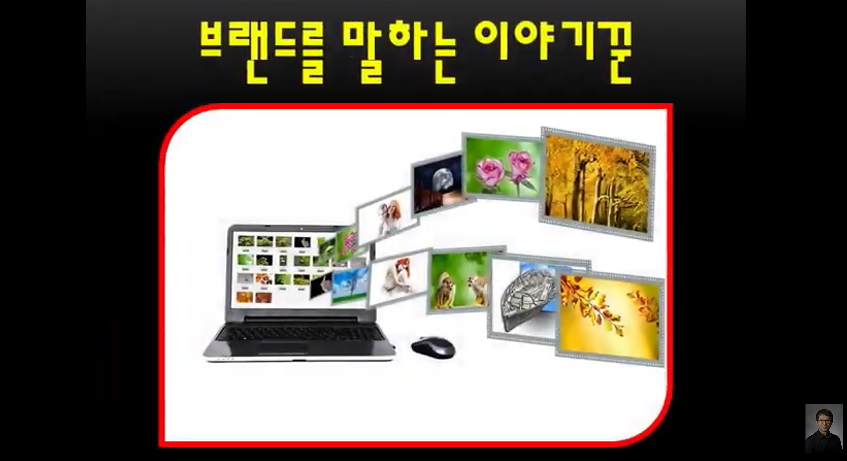연극은 현실 혹은 사회와 긴밀한 예술임에도 현대에 들어와 그 긴밀성이 퇴보된 느낌이다. 기술 발달 덕택에 연극 무대는 더욱 감각적이고 환상적이며 상상적인 세계를 창출하는데 성공했...
http://chineseinput.net/에서 pinyin(병음)방식으로 중국어를 변환할 수 있습니다.
변환된 중국어를 복사하여 사용하시면 됩니다.
- 中文 을 입력하시려면 zhongwen을 입력하시고 space를누르시면됩니다.
- 北京 을 입력하시려면 beijing을 입력하시고 space를 누르시면 됩니다.
https://www.riss.kr/link?id=A105724120
- 저자
- 발행기관
- 학술지명
- 권호사항
-
발행연도
2018
-
작성언어
-
-
주제어
생활연극 ; 일생생활 ; 몸 ; 디지털 ; 치유 연극 ; Living Drama ; Everyday Life ; Body ; Digital ; Healing Theatre
-
등재정보
KCI등재
-
자료형태
학술저널
-
수록면
259-286(28쪽)
-
KCI 피인용횟수
0
- DOI식별코드
- 제공처
-
0
상세조회 -
0
다운로드
부가정보
국문 초록 (Abstract)
본 연구는 생활연극의 개념을 설정하고 이론적 토대를 제시하고자 하며, 생활연극이 어떤 점에서 일상의 삶에 지친 현대인들에게 위로와 치유의 시간이 될 수 있는지를 탐색하고자 한다. 물론 생활연극의 특성을 제시하고 생활연극이 제공할 수 있는 치유적 요소를 탐구하는 것이 전적으로 새로운 것은 아니다. 생활연극은 어쩌면 과거의 연극형태를 답습하는 것일 수도 있다. 그렇지만 생활연극은 오늘 지금의 삶의 형태와 조화를 이루어야 하므로 뉴미디어나 새로운 공동체 형태의 현대적 조건에 어울리는 연극이어야 한다는 점에서 단순히 재생적인 연극이라고 할 수는 없다. 본 연구에서 제기하는 문제는 다음과 같다.
첫째, 이 시대에 생활연극을 언급해야 하는 이유는 무엇인가? 현대의 키워드로는 개인, 표현, 디지털, 갈등, 분열, 분노, 분리, 따돌림, 피로, 황금만능, 소외 등을 언급할 수 있다. 본 연구는 현대 일상생활의 부정적 요소에 초점을 두고 생활연극을 통해 이를 해결할 수 있는 방안을 모색하고자 한다. 둘째, 생활연극은 어떠한 형태의 연극인가라는 물음을 통해 생활연극의 이론적 기초를 마련하고자 한다. 생활연극의 기본 개념은 르페브르가 언급했던 것처럼, 일상생활에서의 탈소외를 위한 축제나 놀이 성격의 연극, 즉 일상과 생활, 삶 속의 연극 형태일 것이다. 생활연극으로의 치유적 연극 형태인 축제와 놀이는 디지털 시대의 특징과도 맞닿아 있어 현대성과도 긴밀하게 연결된다.
연극은 현실 혹은 사회와 긴밀한 예술임에도 현대에 들어와 그 긴밀성이 퇴보된 느낌이다. 기술 발달 덕택에 연극 무대는 더욱 감각적이고 환상적이며 상상적인 세계를 창출하는데 성공했으나 관객과의 교류는 그만큼 뒤로 밀려난 형국이다. 현란한 무대를 바라보며 탄성을 자아내는 관객은 감각의 즐거움을 만끽할 수는 있으나, 그러한 자극은 오히려 내적 참여와 공동의 연대의식을 축소시킬 여지가 있다. 본 연구는 이러한 연극의 본래적 속성과 그 현대적 변용에 대한 의문에서 출발한다. 그리하여 과거의 연극에서 추구하였던 삶 자체의 연극, 즉 삶과 동행하는 연극의 재탄생이 가능한 것인지, 일상의 참여적 연극이 삶의 어떠한 점에서 의의가 있는가를 살펴보고자 한다. 현대인의 삶이 무한경쟁에서 비롯된 피로와 스트레스, 소외와 고독이 만연하고 있다고 진단할 때, 이러한 종류의 연극, 다시 말해 생활연극은 삶에 새로운 활력을 불어넣을 수 있을 것이다.
본 연구는 생활연극의 개념을 설정하고 이론적 토대를 제시하고자 하며, 생활연극이 어떤 점에서 일상의 삶에 지친 현대인들에게 위로와 치유의 시간이 될 수 있는지를 탐색하고자 한다. 물론 생활연극의 특성을 제시하고 생활연극이 제공할 수 있는 치유적 요소를 탐구하는 것이 전적으로 새로운 것은 아니다. 생활연극은 어쩌면 과거의 연극형태를 답습하는 것일 수도 있다. 그렇지만 생활연극은 오늘 지금의 삶의 형태와 조화를 이루어야 하므로 뉴미디어나 새로운 공동체 형태의 현대적 조건에 어울리는 연극이어야 한다는 점에서 단순히 재생적인 연극이라고 할 수는 없다. 본 연구에서 제기하는 문제는 다음과 같다.
첫째, 이 시대에 생활연극을 언급해야 하는 이유는 무엇인가? 현대의 키워드로는 개인, 표현, 디지털, 갈등, 분열, 분노, 분리, 따돌림, 피로, 황금만능, 소외 등을 언급할 수 있다. 본 연구는 현대 일상생활의 부정적 요소에 초점을 두고 생활연극을 통해 이를 해결할 수 있는 방안을 모색하고자 한다. 둘째, 생활연극은 어떠한 형태의 연극인가라는 물음을 통해 생활연극의 이론적 기초를 마련하고자 한다. 생활연극의 기본 개념은 르페브르가 언급했던 것처럼, 일상생활에서의 탈소외를 위한 축제나 놀이 성격의 연극, 즉 일상과 생활, 삶 속의 연극 형태일 것이다. 생활연극으로의 치유적 연극 형태인 축제와 놀이는 디지털 시대의 특징과도 맞닿아 있어 현대성과도 긴밀하게 연결된다.
다국어 초록 (Multilingual Abstract)
The problems raised in this study are as follows. First, why should we mention living plays in this age? Modern keywords can refer to individual, expression, digital, conflict, division, anger, separation, bullying, capital, golden universalism, alienation. Therefore, this study focuses on the alienation of everyday life of modern people and seeks ways to solve it based on living drama. Second, we want to provide the theoretical foundation of living drama through the question of what form of drama is life drama. The basic concept of the living drama, as Lefebvre mentioned, is a festival for the de-alienation in everyday life, or a theater of play nature, that is, a form of play in everyday life and life. Festivals and play, which are forms of healing play as a living drama, are also connected with the characteristics of the digital era, and modern performances are closely linked.
Even though theater is a close art with reality, it seems that the social closeness has declined in modern times. Thanks to technological developments, the theater stage has succeeded in creating a more sensuous and fantastic imaginary world, but the ...
Even though theater is a close art with reality, it seems that the social closeness has declined in modern times. Thanks to technological developments, the theater stage has succeeded in creating a more sensuous and fantastic imaginary world, but the interaction with the audience has been backed by that much. It is because the spectators who see the splendid stage and enjoy the elasticity can enjoy the joy of the senses, but such stimulation reduces the participation and solidarity. This study starts from the question of the original nature of the theatre and its modern transformation. Thus, we want to find out whether it is possible to reproduce the drama itself, which is the life itself, which was pursued in the past drama, and the drama that accompanies life, and how the participatory drama in daily life has significance in life. This kind of living drama can bring new vitality to life when modern life is diagnosed that alienation, solitude fatigue and stress, stem from infinite competition. In addition, this study aims to present the theoretical basis for the living drama that comes into the life, and to explore how the living drama plays a time of comfort and healing for the modern people who are tired of everyday life. Of course, it is not entirely new to present the characteristics of living drama and explore the healing elements that living drama can provide. A living drama may be a sort of past drama. However, the living drama is not a regenerative drama in that it should be in accordance with the modern conditions of new media and new community form in order to harmonize with the present life style.
The problems raised in this study are as follows. First, why should we mention living plays in this age? Modern keywords can refer to individual, expression, digital, conflict, division, anger, separation, bullying, capital, golden universalism, alienation. Therefore, this study focuses on the alienation of everyday life of modern people and seeks ways to solve it based on living drama. Second, we want to provide the theoretical foundation of living drama through the question of what form of drama is life drama. The basic concept of the living drama, as Lefebvre mentioned, is a festival for the de-alienation in everyday life, or a theater of play nature, that is, a form of play in everyday life and life. Festivals and play, which are forms of healing play as a living drama, are also connected with the characteristics of the digital era, and modern performances are closely linked.
참고문헌 (Reference)
1 랜디, 로버트, "페르소나와 퍼포먼스" 학지사 2010
2 진중권, "테크노의 인문학의 구상" 창비 2016
3 남동훈, "지역기반 주민연극동아리의 활동 양상과 전망 - 성미산마을극단 무말랭이의 사례를 중심으로" 2016
4 윤화숙, "지각(aisthesis) 개념 확장을 통한 미학의 재정립 : G. 뵈메(Böhme)의 지각학(Aisthetik)을 중으로" 서울대학교 대학원 2012
5 이진아, "장소특정적 연극에서 ‘장소’와 ‘장소성’의 문제 - 서울의 도시 이동 퍼포먼스를 중심으로 -" 한국연극학회 1 (1): 73-122, 2014
6 신현숙, "장소특정적 연극-퍼포먼스 연구- 한국의 공연작품들을 중심으로" 한국연극학회 1 (1): 171-208, 2013
7 김형기, "일상의 퍼포먼스화 - 혹은 뉴 다큐멘터리 연극- 리미니 프로토콜의 연출작업을 중심으로" 한국헤세학회 (24) : 339-361, 2010
8 허순자, "이머시브 연극(Immersive Theatre)의 장소성과 관객의 공간 이동성 - 펀치드렁크의 ≪슬립 노 모어≫를 중심으로" 29 : 2016
9 제닝스, 수, "연극치료의 진단평가" 학지사 2013
10 제닝스, 수, "연극치료 핸드북" 울력 2010
1 랜디, 로버트, "페르소나와 퍼포먼스" 학지사 2010
2 진중권, "테크노의 인문학의 구상" 창비 2016
3 남동훈, "지역기반 주민연극동아리의 활동 양상과 전망 - 성미산마을극단 무말랭이의 사례를 중심으로" 2016
4 윤화숙, "지각(aisthesis) 개념 확장을 통한 미학의 재정립 : G. 뵈메(Böhme)의 지각학(Aisthetik)을 중으로" 서울대학교 대학원 2012
5 이진아, "장소특정적 연극에서 ‘장소’와 ‘장소성’의 문제 - 서울의 도시 이동 퍼포먼스를 중심으로 -" 한국연극학회 1 (1): 73-122, 2014
6 신현숙, "장소특정적 연극-퍼포먼스 연구- 한국의 공연작품들을 중심으로" 한국연극학회 1 (1): 171-208, 2013
7 김형기, "일상의 퍼포먼스화 - 혹은 뉴 다큐멘터리 연극- 리미니 프로토콜의 연출작업을 중심으로" 한국헤세학회 (24) : 339-361, 2010
8 허순자, "이머시브 연극(Immersive Theatre)의 장소성과 관객의 공간 이동성 - 펀치드렁크의 ≪슬립 노 모어≫를 중심으로" 29 : 2016
9 제닝스, 수, "연극치료의 진단평가" 학지사 2013
10 제닝스, 수, "연극치료 핸드북" 울력 2010
11 신승원, "앙리 르페브르" 커뮤니케이션북스 2016
12 이인순, "시민예술과 지역문화재생으로서의 연극 - 도시 안산을 중심으로" 한국드라마학회 (51) : 35-64, 2017
13 김수동, "사이코드라마의 이론과 적용" 학지사 2004
14 데이튼, 티안, "사이코드라마 매뉴얼" 시그마프레스 2012
15 할프린, 다리아, "동작중심 표현예술치료" 시그마프레스 2006
16 김형기, "동시대 연극비평의 방법론과 실제" 연극과 인간 2009
17 김민지, "도시공간과 실천적 일상전술의 예술적 실행" 현대미술학회 16 (16): 37-84, 2012
18 칼프, 도라, "도라 칼프의 모래놀이" 학지사 2012
19 퍼스, 그레그, "그림 속에 숨겨진 마음의 세계" 학지사 2009
20 르페브르, 앙리, "공간의 생산" 에코리브르 2011
21 하형주, "『공연과 이론』, 가을호 통권 59호" 2015
22 김형기, "“연극성” 개념의 변형과 확장" 한국연극학회 (23) : 269-295, 2004
동일학술지(권/호) 다른 논문
-
노인연극의 비판적 사유와 모색 -자전적 기억과 회상에 기반하여
- 한국드라마학회
- 김숙현 ( Kim Suk-hyun )
- 2018
- KCI등재
-
1950~60년대 연극전문비평 형성 과정에서 종합교양잡지의 역할 -에디토리얼을 중심으로
- 한국드라마학회
- 김유미 ( Kim Yoo-mi )
- 2018
- KCI등재
-
- 한국드라마학회
- 서인숙 ( Suh In-sook )
- 2018
- KCI등재
-
- 한국드라마학회
- 양지선 ( Yang Ji-sun )
- 2018
- KCI등재
분석정보
인용정보 인용지수 설명보기
학술지 이력
| 연월일 | 이력구분 | 이력상세 | 등재구분 |
|---|---|---|---|
| 2028 | 평가예정 | 재인증평가 신청대상 (재인증) | |
| 2022-01-01 | 평가 | 등재학술지 유지 (재인증) |  |
| 2019-01-01 | 평가 | 등재학술지 유지 (계속평가) |  |
| 2017-09-25 | 학술지명변경 | 외국어명 : Drama Research -> The Journal of Drama |  |
| 2016-01-01 | 평가 | 등재학술지 선정 (계속평가) |  |
| 2015-01-01 | 평가 | 등재후보학술지 유지 (계속평가) |  |
| 2014-09-02 | 학회명변경 | 영문명 : 미등록 -> The Korean Drama Society |  |
| 2014-02-12 | 학술지명변경 | 외국어명 : The Drama Association of Korea -> Drama Research |  |
| 2013-01-01 | 평가 | 등재후보학술지 유지 (기타) |  |
| 2012-01-01 | 평가 | 등재후보학술지 유지 (기타) |  |
| 2011-01-01 | 평가 | 등재후보학술지 유지 (등재후보2차) |  |
| 2010-01-01 | 평가 | 등재후보 1차 PASS (등재후보1차) |  |
| 2008-01-01 | 평가 | 등재후보학술지 선정 (신규평가) |  |
학술지 인용정보
| 기준연도 | WOS-KCI 통합IF(2년) | KCIF(2년) | KCIF(3년) |
|---|---|---|---|
| 2016 | 0.48 | 0.48 | 0.48 |
| KCIF(4년) | KCIF(5년) | 중심성지수(3년) | 즉시성지수 |
| 0.48 | 0.47 | 0.877 | 0.14 |





 KCI
KCI KISS
KISS






